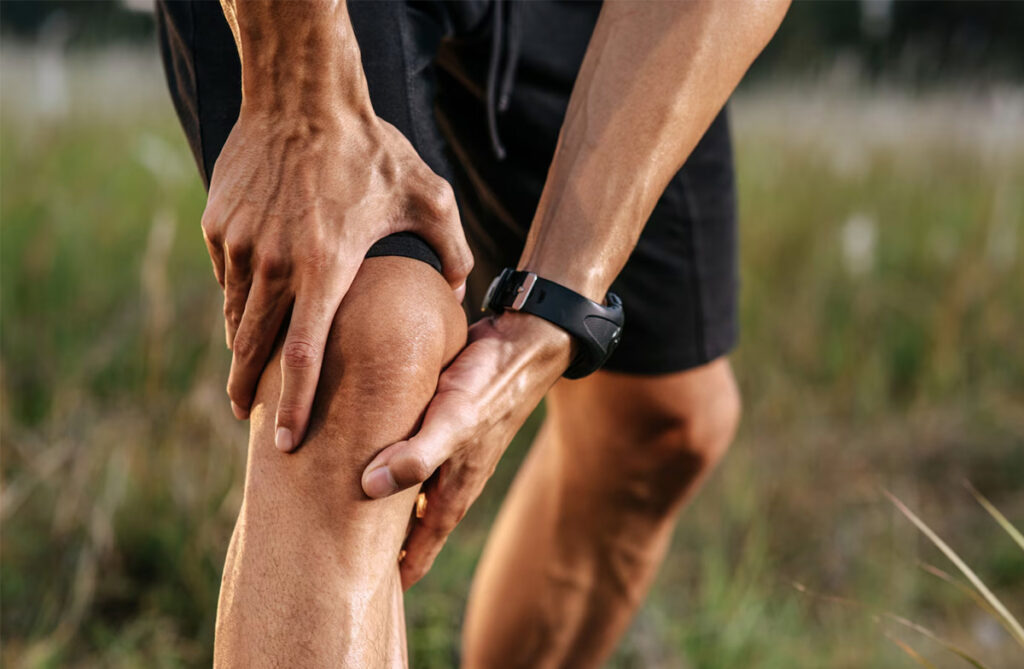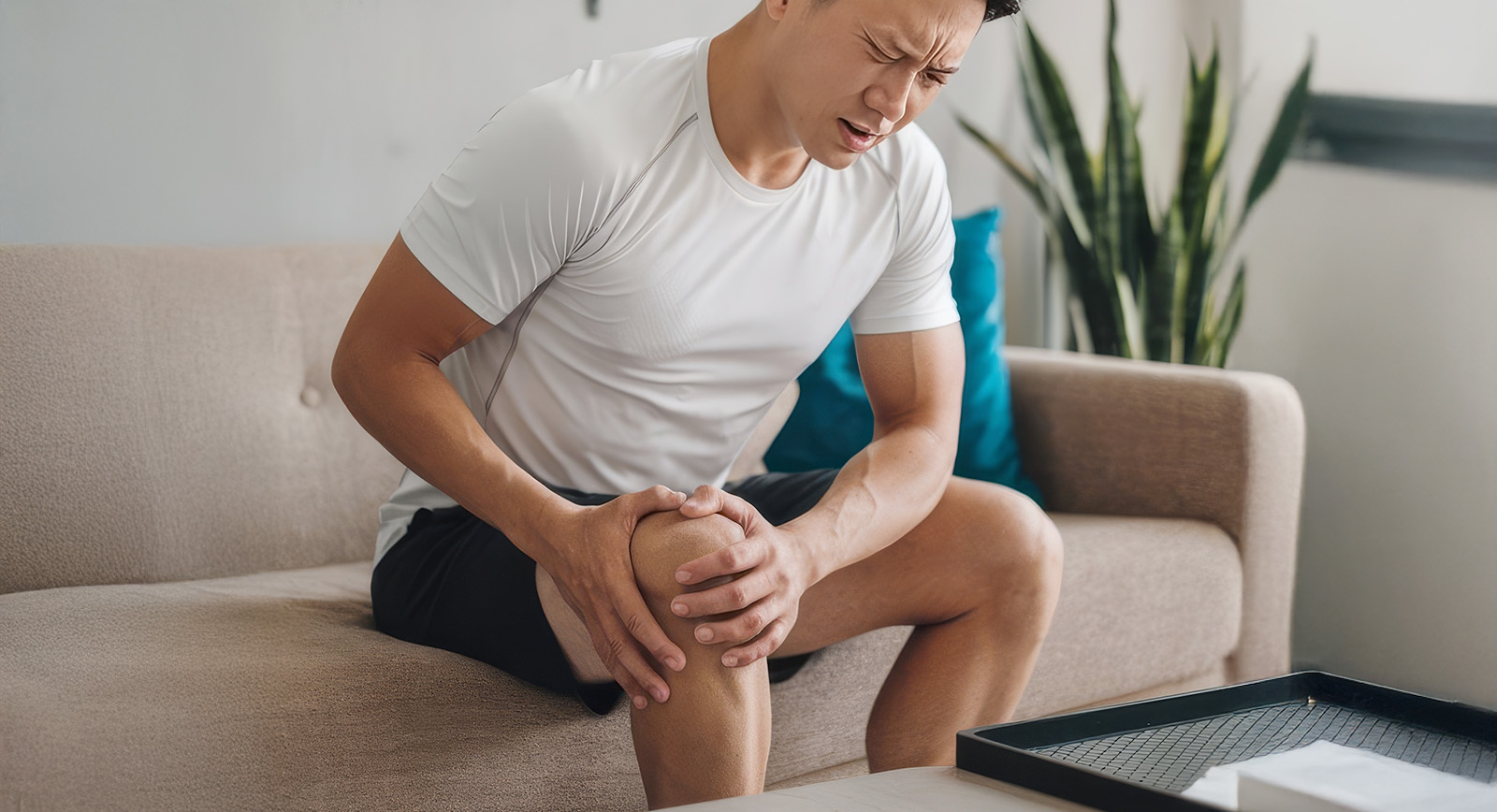Knee Osteoarthritis: Understand, Manage, and Live Well

Introduction
Knee osteoarthritis (OA)—also called degenerative joint disease—is a chronic, progressive condition marked by the breakdown of cartilage in the knee joint, leading to pain, stiffness, and reduced mobility. As the most common form of OA, knee OA affects millions worldwide and contributes significantly to disability and declining quality of life.
Think of cartilage as your body’s natural shock absorber—when it wears out, your bones begin rubbing together. This friction causes inflammation, swelling, stiffness, and sometimes extra bone growths called bone spurs .
While there is no cure, effective treatments—from lifestyle changes to advanced injections and surgery—can help you stay active and maintain mobility.
What is Knee Osteoarthritis?
- Definition: A degenerative joint disease where the smooth cartilage lining the knee joint gradually deteriorates, allowing the bones to grind together.
- Pathophysiology: Cartilage loses collagen and proteoglycan over time due to excessive use and inflammatory enzymes, disrupting the joint’s natural shock-absorption and lubrication system.
- Joint Changes: As cartilage thins, subchondral bone remodels—becoming denser, forming cysts, and developing osteophytes (bone spurs) within the tibia, femur, and patella



🦵 Symptoms and Presentation of Knee Osteoarthritis
Knee osteoarthritis typically develops gradually, with symptoms that worsen over time. The condition can affect one or both knees and may fluctuate in intensity depending on activity level, weather changes, and disease progression. Recognizing the early and progressive symptoms is essential for early intervention and effective management.
The hallmark symptoms include:
🔹 Pain during or after weight-bearing activities
One of the most common and earliest signs is pain in the knee when performing activities that load the joint, such as walking, climbing stairs, squatting, standing for long periods, or rising from a seated position. The pain is typically dull and aching, but it can become sharp during flare-ups. As the cartilage wears away and bone surfaces begin to rub against each other, the pain often becomes more persistent—even during rest.
🔹 Morning stiffness or stiffness after inactivity
You may notice that your knee feels stiff when you first wake up or after sitting or resting for a while. This stiffness usually improves after moving the joint for several minutes. While this feature is shared with other forms of arthritis, in osteoarthritis, it typically lasts less than 30 minutes.
🔹 Swelling or puffiness
Inflammation of the synovial lining or joint capsule can cause visible swelling in the knee. This is due to the buildup of synovial fluid as the body responds to joint irritation. The swelling may feel soft or mildly warm to the touch and can fluctuate depending on activity and time of day.
🔹 Crepitus (grinding or popping sensation)
As cartilage continues to wear down, irregular surfaces within the joint can cause audible or palpable sensations. You might hear or feel cracking, grinding, or popping when moving the knee, especially when climbing stairs or standing up from a seated position. This is called crepitus and is a common sign of mechanical joint degeneration.
🔹 Joint instability or buckling
Some individuals with moderate to severe knee osteoarthritis experience a wobbly or unstable feeling, especially when walking or turning quickly. This can occur due to muscle weakness, ligament laxity, or irregular joint movement from bone spurs or cartilage loss. The knee may feel like it could “give out” or collapse, increasing the risk of falls and injury.
🔹 Locking or catching
In advanced stages, loose fragments of cartilage or bone may interfere with smooth joint motion, leading to locking, where the knee temporarily feels stuck or won’t fully bend or straighten. Some patients report a catching sensation, particularly when transitioning from one movement to another.
🔹 Reduced range of motion
Over time, the ability to fully bend (flex) or straighten (extend) the knee becomes limited. This may result from joint stiffness, swelling, pain, or the formation of bone spurs that physically block the joint’s motion. Reduced flexibility can affect basic daily activities such as sitting, kneeling, or walking comfortably.
🔹 Weather sensitivity
Many people with knee osteoarthritis report that changes in weather, especially cold or damp conditions, can worsen symptoms such as joint stiffness and pain. Though the exact mechanism is unclear, it may relate to changes in barometric pressure affecting joint tissues.
Symptoms and Presentation
The hallmark symptoms include:
- Pain during or after weight-bearing activities—walking, climbing stairs, or standing.
- Morning stiffness lasting up to 30 minutes or stiffness following prolonged sitting.
- Swelling or a “puffy” feel due to inflamed synovium .
- Crepitus: grinding, cracking, or popping sensations during movement .
- Joint instability and feelings that the knee may buckle or lock .
- Reduced range of motion and difficulty in bending or straightening the knee.

Disease Progression: The Four Stages
Although there isn’t a universal staging system, clinicians often use a four-stage framework to describe progression:
- Stage 1 (Minor)
• Minimal cartilage wear; typically asymptomatic. - Stage 2 (Mild)
• Early symptoms like pain during weight-bearing; some cartilage loss detectable via imaging. - Stage 3 (Moderate)
• Noticeable cartilage degradation; pain during daily activities; stiffness and limited movement. - Stage 4 (Severe)
• Extensive cartilage loss leading to bone-on-bone contact; significant pain, swelling, immobility; joint replacement may be considered

Causes & Risk Factors
Primary vs. Secondary OA:
- Primary OA arises from natural aging and wear-and-tear without overt triggers .
- Secondary OA stems from identifiable causes: prior injuries, joint misalignment (varus/valgus), metabolic diseases (e.g., diabetes, hemochromatosis), inflammatory arthritis, or congenital anomalies .
Key Risk Factors:
- Age: Prevalence rises steeply after age 50
- Gender: Women are more commonly affected than men
- Obesity: Each kilogram adds 3–4 kg of stress per step—plus inflammatory fatty tissue compounds wear
- Past knee injuries or surgery, altered knee mechanics, or occupational/sports stress
- Genetic predisposition, bone deformities (knock knees, bow legs), weak musculature surrounding the knee
- Metabolic/inflammatory diseases—e.g., diabetes, gout—may accelerate degeneration
Managing Knee OA: A Phased Approach
Though uncurable, knee OA can be effectively managed with lifestyle modifications, medical treatments, and, if necessary, surgical interventions

1. Knee Fillers for Knee Osteoarthritis: Fast, Effective, and Long-Lasting Relief
Knee Fillers is a next-generation injectable treatment designed to relieve pain and improve function in patients with knee osteoarthritis (OA). Its formulation combines 2% non-crosslinked hyaluronic acid (HA) with 4% sorbitol, creating a dual-action effect that not only restores lubrication within the joint but also protects the HA from oxidative breakdown. This smart gel acts quickly and delivers sustained results—helping patients move with ease again.
🔬 What Makes it Different?
- Non-crosslinked HA (20mg/mL): Enhances joint lubrication and shock absorption
- Sorbitol (40mg/mL): A potent antioxidant that stabilizes HA and reduces inflammation
- Biofermentative origin: Free of animal proteins, pharmaceutical-grade purity
- Viscoelastic support: Restores natural properties of healthy synovial fluid
⚡ Rapid Onset and Sustained Pain Relief
One of the standout benefits is how quickly it starts working. Clinical studies show:
- Pain relief begins within 7 days
- 41% decrease in WOMAC pain scores by Day 7
- 61.8% total pain reduction at 6 months
- Continuous improvement in joint stiffness, function, and overall mobility
This rapid and ongoing relief allows many patients to reduce or even stop their use of oral pain medications.
📊 Proven Results in Real Patients
In clinical use, Knee Fillers has demonstrated significant improvements in both patient-reported outcomes and physician assessments:
- 78.8% of patients achieved fast, sustainable pain relief
- 89.2% patient satisfaction rate
- 25% of patients stopped using co-medication within 6 months
- 92.8% of physicians rated it as effective or very effective
2. RegenPRP® for Knee Osteoarthritis: A Regenerative Treatment Backed by Science
As knee osteoarthritis (OA) progresses, the loss of cartilage, inflammation, and joint degeneration can lead to debilitating pain and limited mobility.
RegenPRP® is an advanced form of autologous platelet-rich plasma therapy, meaning it uses the patient’s own blood to create a healing serum rich in growth factors. These growth factors—such as PDGF, VEGF, TGF-β, and IGF—are essential for tissue regeneration, anti-inflammatory action, and cartilage preservation.
RegenPRP is produced using Regen Lab’s CE-certified RegenKit® technology, which ensures:
- Over 90% platelet recovery
- Elimination of 99% of red blood cells and 85% of pro-inflammatory white blood cells
- High platelet concentration with minimal contamination
This clean, reproducible formulation makes RegenPRP ideal for intra-articular (within the joint) injections in cases of knee osteoarthritis.
In OA, joint cartilage breaks down, leading to inflammation, pain, and bone-on-bone friction. RegenPRP combats this process by:
- Stimulating chondrocyte (cartilage cell) activity to repair damaged cartilage
- Promoting new blood vessel formation (angiogenesis) to nourish the joint
- Modulating the immune response to reduce synovial inflammation
- Inhibiting the catabolic enzymes that further degrade cartilage
Unlike steroid injections, which only reduce inflammation temporarily, RegenPRP works to address the underlying degenerative process, offering more sustainable improvement.
RegenPRP is considered extremely safe:
- Autologous (from your own blood), so there is minimal risk of allergic reaction
- No synthetic drugs or preservatives
- Used in over 200 clinical publications supporting efficacy and safety
Most patients experience only mild post-injection soreness, which resolves within a few days.


3. Pain Relief & Medications
Topical Analgesics
Gels/sprays with NSAIDs (e.g., diclofenac) or lidocaine offer localized pain relief with minimal side effects.
Oral Painkillers
- NSAIDs (e.g., ibuprofen, diclofenac) reduce joint inflammation and pain—effective short-term .
- Paracetamol may be used for mild pain but is less effective than NSAIDs .
- COX-2 inhibitors offer similar relief with reduced gastrointestinal risk. Opioids are usually avoided due to dependency and side effects .
4. Lifestyle and Self-care
Weight Management
Losing just 5–10% of body weight reduces knee load and can significantly ease symptoms.
Exercise & Physical Therapy
- Regular light-to-moderate impact exercise (walking, cycling, swimming) strengthens muscles, supports joint alignment, and supplies nutrients to cartilage.
- Resistance training focuses on quadriceps, hamstrings, and core integration for stability .
- Flexibility exercises (yoga, tai chi) help maintain range of motion and prevent stiffness .
- Physiotherapy guidance ensures safer execution—water-based therapy may be particularly gentle and effective.
Joint Protection
- Use supportive footwear and consider orthotics to reduce strain .
- Brief activity cycles help avoid prolonged joint loading (e.g., alternating sitting/standing)

Complications of Knee OA
- Joint instability from weakened muscles.
- Bone spurs interfering with motion.
- Baker’s cysts from synovial fluid leaking behind the knee.
- Psychological impact: chronic pain and movement limitations can lead to anxiety and depression.
Prevention & Maintenance
Proactive strategies include:
- Maintain healthy weight to reduce knee load
- Stay active with low‑impact exercises like cycling, swimming, or brisk walking .
- Strengthen supportive muscles around the knee, particularly quadriceps and hamstrings
- Use proper footwear and orthotics to improve alignment and reduce joint stress
- Protect knees from injury and manage flare-ups promptly with rest, ice, compression, and elevation

The Clifford Clinic Approach to Knee OA
At Clifford Orthopaedics, we take a holistic, evidence-based approach:
- Comprehensive assessment: thorough diagnosis including imaging and biomechanical review.
- Personalised treatment: tailored lifestyle, physio, and pain management plans.
- Non-surgical interventions: guided hyaluronic acid gels, PRP, tailored exercise therapy.
- Surgical guidance: we provide referrals for osteotomy or joint replacement when necessary.
- Ongoing support: monitoring, mobile coaching/apps, and mental wellbeing support.
Frequently Asked Questions
What causes knee osteoarthritis, and how is it different from other types of arthritis?
Knee osteoarthritis is a degenerative joint disease caused by the gradual breakdown of articular cartilage—the smooth tissue that cushions the ends of bones. As cartilage wears away, bones begin to rub against each other, leading to pain, stiffness, swelling, and reduced mobility.
It differs from rheumatoid arthritis, which is an autoimmune condition causing systemic joint inflammation, and from post-traumatic arthritis, which develops after injury. Osteoarthritis is primarily due to age-related wear-and-tear, but can also be accelerated by obesity, joint misalignment, repetitive stress, genetics, or previous injuries.
What are the early warning signs of knee osteoarthritis?
Early symptoms can be subtle and may fluctuate, making them easy to overlook.
Warning signs include:
- Pain during or after movement, especially climbing stairs or standing for long periods
- Morning stiffness that improves after 30 minutes
- Cracking or grinding sounds (crepitus) when bending the knee
- Swelling or puffiness, particularly after activity
- Reduced flexibility or difficulty fully bending or straightening the knee
- As OA progresses, symptoms typically worsen and may interfere with daily activities like walking, kneeling, or getting out of a chair.
How is knee osteoarthritis diagnosed, and what imaging is necessary?
Diagnosis begins with a clinical examination—your doctor will assess knee pain, mobility, alignment, swelling, and any instability. Imaging is often used to confirm the diagnosis and assess severity:
- X-rays are the most common tool and can show joint space narrowing, bone spurs (osteophytes), and sclerosis.
- MRI may be ordered if more detail is needed about cartilage, menisci, or ligament involvement, especially in younger patients or when symptoms seem worse than X-ray findings.
- Ultrasound can assess fluid accumulation or soft tissue inflammation in real-time.
A thorough evaluation helps determine whether your symptoms stem from OA or another knee condition.
What non-surgical treatments are available for managing knee OA?
Many patients can manage knee osteoarthritis effectively with non-surgical interventions, especially in the early to moderate stages:
- Weight loss to reduce joint loading
- Physical therapy focused on strengthening the quadriceps, glutes, and core
- Low-impact exercise (e.g., swimming, cycling, walking)
- Pain medications like acetaminophen or NSAIDs (oral or topical)
- Intra-articular injections, such as corticosteroids, hyaluronic acid, or platelet-rich plasma (PRP)
- Knee braces or orthotics to improve alignment and reduce stress
- Heat/cold therapy and supportive lifestyle changes
A tailored, multi-modal treatment plan often delays or avoids the need for surgery.
When should I consider surgery for knee osteoarthritis, and what are the options?
Surgery is considered when conservative treatments no longer control pain or maintain mobility, and quality of life is significantly affected. Common surgical options include:
- Arthroscopic debridement (less commonly used today, mostly for mechanical symptoms)
- Osteotomy to realign the leg in younger, active patients
- Partial knee replacement (unicompartmental) for localized cartilage loss
- Total knee replacement (TKR) for advanced or widespread joint damage
Your orthopedic specialist will evaluate joint alignment, degree of cartilage loss, age, activity level, and overall health to determine the best approach. With modern techniques, most patients achieve excellent pain relief and function after knee replacement surgery.
Our Services
EFFECTIVE SOLUTIONS
Don’t let knee osteoarthritis hold you back.
Start with a clinical assessment today—and get a tailored plan to manage pain, improve function, and preserve quality of life for years to come.




